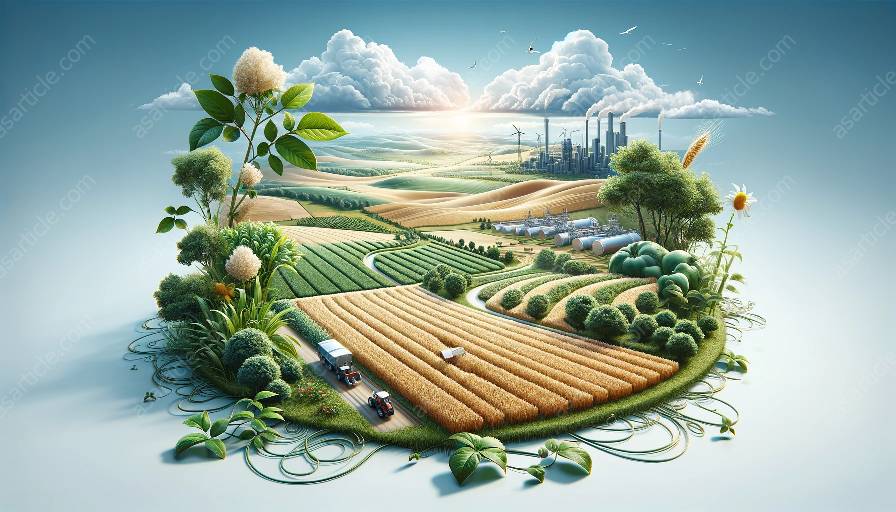In the world of agriculture, navigating the complex web of policies and regulations is crucial for the success of businesses and the sustainability of the industry. Agricultural policy and regulation intersect with various facets of the agricultural sector, including agricultural marketing, agribusiness, and agricultural sciences, creating a dynamic environment where these domains interact and influence each other. To fully grasp the significance of this interconnection, it is essential to delve into each component and understand how they contribute to the broader landscape of agriculture.
Agricultural Policy and Regulation
Agricultural policy and regulation encompass the laws, rules, and guidelines governing the agricultural sector. These policies are formulated at local, national, and international levels, shaping the framework within which agricultural activities are conducted. They address a wide range of issues, including land use, production methods, environmental conservation, food safety, trade, and subsidies. The primary objectives of agricultural policies and regulations include promoting sustainable farming practices, ensuring food security, and enhancing the overall well-being of agricultural communities.
Impact on Agricultural Marketing
The agricultural marketing landscape is intricately linked to policies and regulations. Government policies often influence market prices, supply chain management, and consumer access to agricultural products. Regulations pertaining to labeling, packaging, and advertising also play a significant role in shaping marketing strategies within the agricultural industry. Moreover, trade policies and agreements impact the import and export of agricultural goods, influencing market dynamics and competition.
Interaction with Agribusiness
Agribusiness, which encompasses agricultural production, processing, and distribution, operates within the framework of agricultural policies and regulations. Compliance with environmental standards, labor laws, and food safety regulations is essential for agribusinesses to maintain their operations and uphold their reputation. Additionally, government support programs and subsidies directly impact the financial aspects of agribusiness, influencing investment decisions and strategic planning.
Integration with Agricultural Sciences
Agricultural sciences, including agronomy, plant genetics, soil science, and animal husbandry, rely on research and innovation to drive progress in the agricultural sector. However, the implementation of scientific advancements often intersects with regulatory frameworks. Genetically modified organisms (GMOs), pesticide use, and biotechnology applications are subject to strict regulations that aim to balance technological innovation with environmental and safety concerns. Agricultural policies also influence funding for research and development initiatives, influencing the direction and priorities of scientific endeavors.
Challenges and Opportunities
While agricultural policy and regulation play a critical role in shaping the industry, they also present challenges and opportunities for stakeholders. Regulatory compliance can impose financial burdens on agricultural businesses, particularly small-scale producers. However, well-designed policies can create a level playing field, promote sustainable practices, and safeguard consumer interests. Moreover, evolving policies offer opportunities for innovation and adaptation, driving advancements in agricultural technology, market strategies, and scientific breakthroughs.
Future Trends and Implications
The future of agricultural policy and regulation is likely to be influenced by technological advancements, global economic shifts, and environmental considerations. As the agricultural industry embraces digitalization, automation, and precision farming, regulatory frameworks will need to adapt to accommodate these developments. Additionally, global trade dynamics, climate change, and food security concerns will shape the direction of agricultural policies, seeking to address emerging challenges while fostering resilience and sustainability within the sector.
Conclusion
Agricultural policy and regulation form the backbone of the agricultural industry, serving as a guiding framework that influences agricultural marketing, agribusiness, and agricultural sciences. Understanding the intricate intersections between these domains is essential for industry stakeholders and policymakers alike. By recognizing the interplay of policies, regulations, and their impact on various facets of agriculture, informed decisions can be made to promote a thriving, sustainable, and innovative agricultural landscape.

